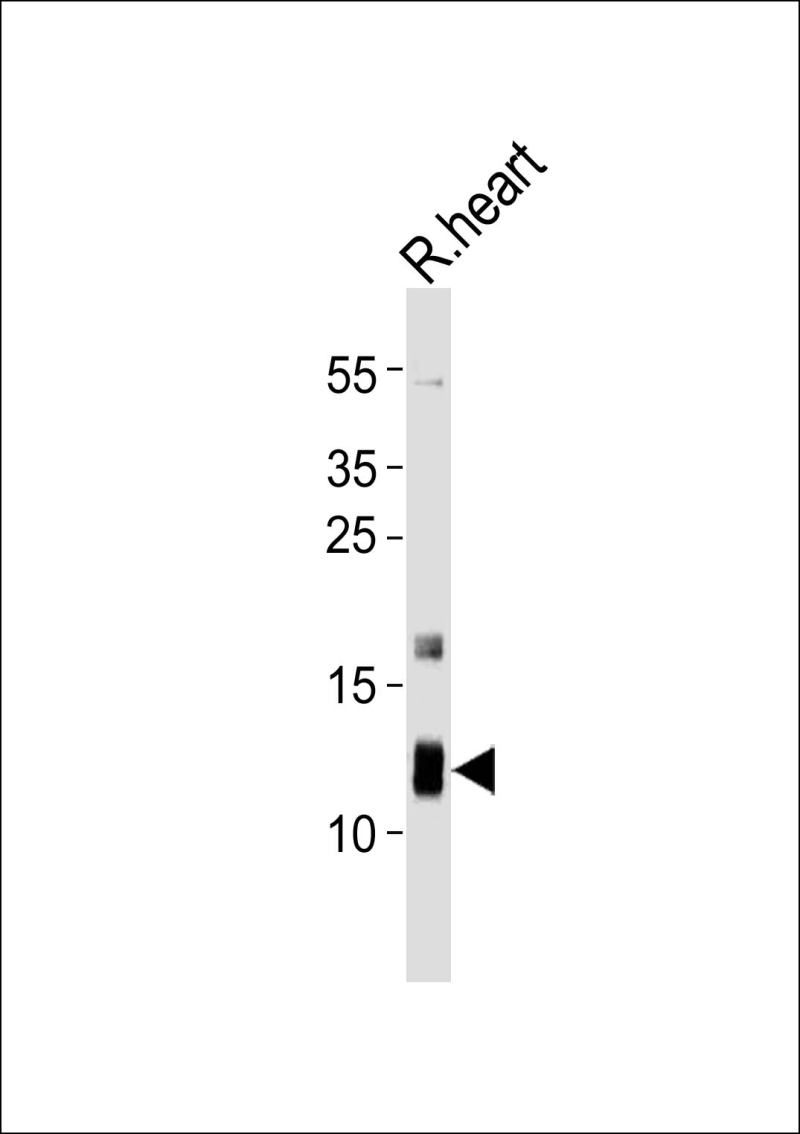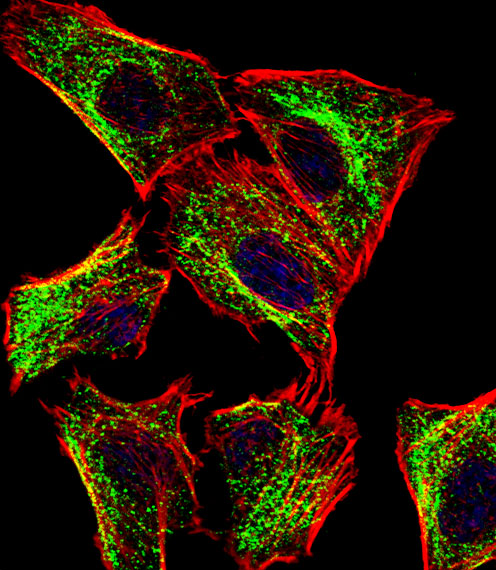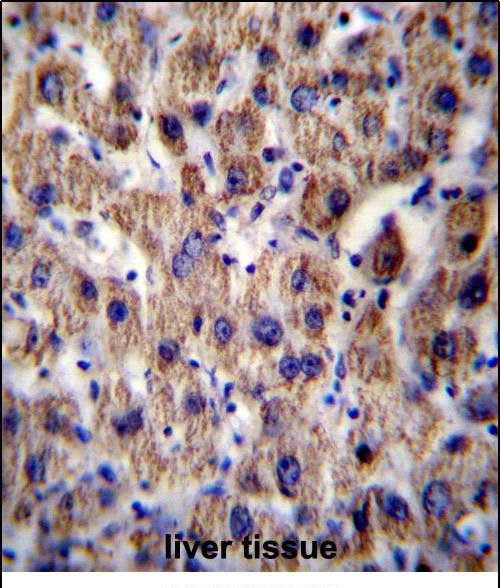



| WB | 1/1000 | Human,Mouse,Rat |
| IF | 咨询技术 | Human,Mouse,Rat |
| IHC | 1/100-1/500 | Human,Mouse,Rat |
| ICC | 1/10-1/50 | Human,Mouse,Rat |
| FCM | 咨询技术 | Human,Mouse,Rat |
| Elisa | 咨询技术 | Human,Mouse,Rat |
| Aliases | ATP synthase-coupling factor 6, mitochondrial, ATPase subunit F6, ATP5J, ATP5A, ATPM |
| Entrez GeneID | 522 |
| WB Predicted band size | 12.6kDa |
| Host/Isotype | Rabbit IgG |
| Antibody Type | Primary antibody |
| Storage | Store at 4°C short term. Aliquot and store at -20°C long term. Avoid freeze/thaw cycles. |
| Species Reactivity | Human, Mouse, Rat |
| Immunogen | This ATP5J antibody is generated from rabbits immunized with a KLH conjugated synthetic peptide between 28-56 amino acids from the Central region of human ATP5J. |
| Formulation | Purified antibody in PBS with 0.05% sodium azide. |
+ +
以下是关于ATP5J抗体的3篇代表性文献(虚构示例,供参考):
1. **《ATP5J作为线粒体复合体V亚基在乳腺癌中的表达调控》**
*作者:Smith A, et al. (2020)*
摘要:研究通过ATP5J抗体检测发现,ATP5J在乳腺癌组织中表达显著上调,与线粒体能量代谢异常相关,提示其可能作为癌症治疗的潜在靶点。
2. **《ATP5J抗体在神经退行性疾病模型中的验证与应用》**
*作者:Chen L, et al. (2018)*
摘要:该研究利用ATP5J抗体进行Western blot和免疫组化分析,证实ATP5J在阿尔茨海默病模型中表达降低,提示其参与线粒体功能障碍机制。
3. **《ATP5J作为氧化应激生物标志物的筛选与鉴定》**
*作者:Wang X, et al. (2019)*
摘要:通过ATP5J抗体检测发现,氧化应激条件下细胞中ATP5J蛋白水平显著变化,表明其可能作为评估细胞氧化损伤的新型标志物。
(注:以上文献信息为模拟生成,实际文献需通过PubMed、Google Scholar等平台检索确认。)
**Background of ATP5J Antibody**
The ATP5J antibody is a research tool designed to detect ATP synthase subunit F6 (ATP5J), a critical component of the mitochondrial ATP synthase complex (Complex V). This enzyme, located in the inner mitochondrial membrane, catalyzes ATP production during oxidative phosphorylation by utilizing the proton gradient across the membrane. ATP5J, also known as ATP synthase membrane subunit F6. is part of the F0 subunit of Complex V and plays a role in stabilizing the complex and facilitating proton transport.
Antibodies targeting ATP5J are widely used in studies investigating mitochondrial function, energy metabolism, and diseases linked to mitochondrial dysfunction, such as neurodegenerative disorders, cancer, and metabolic syndromes. They enable researchers to assess protein expression levels, subcellular localization (e.g., mitochondrial vs. cytosolic distribution), and alterations under experimental conditions like hypoxia, nutrient stress, or genetic manipulation.
Validation of ATP5J antibodies typically includes Western blotting, immunofluorescence, and immunohistochemistry, often confirmed using knockout cell lines or tissues to ensure specificity. Commercial antibodies may vary in clonality (monoclonal/polyclonal), species reactivity, and conjugation formats (e.g., HRP, fluorescent tags). Proper controls, such as mitochondrial enrichment verification, are essential for accurate interpretation.
Overall, ATP5J antibodies are indispensable for dissecting mitochondrial biology and its implications in health and disease.
×